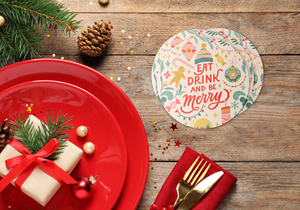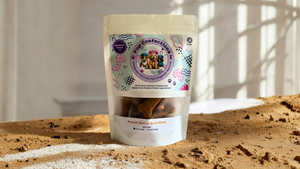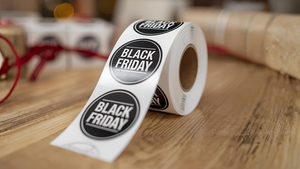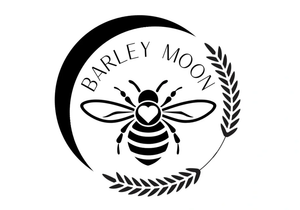10 Common Product Design Mistakes to Avoid

Whether it’s a beautifully packaged candle or an eye-catching bottle of craft beer, a well-designed label is key to capturing the hearts of your audience. However, navigating the intricate process of product design requires careful consideration.
Join us as we explore the essence of product design, its impact on buyers, and ten mistakes businesses should sidestep. We’ll also explore what product design mistakes brands should avoid when designing custom stickers, labels, and other products.
What is Product Design?
Product design is the process of imagining, creating, and iterating products that solve users’ problems or address specific needs in a given market. The goal is to strike a delicate balance between aesthetics, functionality, and cost-effectiveness, ensuring that the product captures customer attention and aligns with market demands.
Product designers intentionally choose design elements to create a visually appealing product. However, this visual charm needs to work hand in hand with practicality. It's not just about looking good; it's about ensuring the product is user-friendly and delivers an experience that adds value.
It’s vital to consider cost-effectiveness during the product design process. What price is your customer willing to pay for your product, and what experience do they expect? You need to choose production processes, materials, and finishes that deliver high quality without breaking the bank. In addition, you must also possess a keen understanding of market demands, consumer preferences, and industry trends to ensure that the designed product resonates with its intended audience.
What is the Importance of Product Design?
Product design is the primary interface between consumers and the product. It serves as the initial introduction to a brand's offering, encompassing visual appeal, functionality, and usability.
A well-designed product transcends aesthetics and communicates the brand's identity and values. Beyond capturing attention, it establishes a connection with consumers based on trust and satisfaction. This connection, forged through thoughtful design, fosters customer loyalty and leads to repeat sales.

How Does Product Design Influence Buyers?
Product design isn't just about looks; it's the silent force guiding your choices when you shop. Picture this: you're eyeing a sleek gadget or a trendy pair of shoes. The way it looks and feels—that's the essence of product design.
When a product is crafted with your brand in mind, it goes beyond a surface-level understanding. Sure, the product should look good, but it should also make your life smoother, fitting into your routine seamlessly, and offering an experience that clicks. This is where thoughtful design practices become so important.
However, rushed product design can have the opposite effect. Any customer who’s struggled to navigate a confusing product can attest to this. A poorly designed product can influence a customer’s perception of the entire brand, which can lead to negative word-of-mouth. Ultimately, product design serves as the critical link between the brand and the buyer — and is a major factor that dictates success or failure.
10 Common Product Design Mistakes to Avoid
To achieve product design success, avoiding common pitfalls is essential. This section delves into the intricacies of design missteps, shedding light on ten mistakes that businesses should sidestep in their pursuit of designing exceptional products.
1. Focusing Too Much on Aesthetics
While aesthetics are crucial, an overemphasis on visual appeal at the expense of functionality can lead to product failure. Striking the right balance between aesthetics, performance, and cost is essential for sustained success. Ultimately, a visually stunning product is only as good as its usability and overall performance.
2. Unlicensed Use of Intellectual Property
Using copyrighted phrases or imagery in your product design can result in legal ramifications and damage to your brand's reputation. Thorough research before starting the design process can prevent these kinds of issues. For example, if you want to use a photograph you found online as an illustration on a label, check first to make sure it’s in the public domain.
3. Ignoring Specifications
Overlooking the intricacies of product specifications and requirements can lead to design pitfalls. When specific details, such as color codes or printing methods, are not explicitly outlined, the final product may deviate from the intended design. Clear communication and adherence to standards become imperative to avert costly modifications and delays, ensuring that the envisioned design is faithfully translated into the final product. This meticulous attention to detail not only streamlines the design process but also safeguards against post-production challenges.
4. Failing to Understand the Consumer
Designing with the end consumer in mind is paramount. Pricing, usability, and aligning with customer needs should be prioritized throughout the design process. You need to understand your customers to avoid products that miss the mark both in meeting expectations and resonating with target audiences.
5. Forgetting to Study Product Trends
Staying abreast of product trends ensures your designs remain relevant and appealing to consumers. Outdated products can struggle to find a market. Keep in mind that aligning your designs with current trends not only attracts consumers but also positions your brand as forward-thinking and innovative.
6. Using Illegible Font
Make sure you’re using a readable font. You don’t want to confuse your customers or make them second guess a buying decision because they can’t understand your labeling. Clear and readable typography ensures that your message reaches the consumer without friction. The readability of your message is as important as the message itself.
7. Font Size
Inappropriate font sizes can affect readability. Ensuring the right balance in font size enhances the overall design and user experience. Opt for larger fonts for your brand's name on promotional coasters, providing visibility from a distance while employing smaller sizes for detailed text, like product specifications on the back of a jar intended for close-up reading.
8. Ignoring Crop Marks
Improper placement of images can impact the visual appeal of your product. When working with a printed product, make sure your design fits within the “crop marks,” the dotted line on the edge of the design. This will prevent the design elements from being cut off or distorted.
9. Uneven White Space
Balanced white space contributes to a visually appealing design. Chaos in the layout can deter customers, making it crucial to distribute white space evenly. Well-managed white space can help guide the consumer’s focus.
10. Working Under Pressure
Designing under stress can result in errors. Incorporating buffers into deadlines helps maintain a harmonious design process and prevent last-minute mistakes. Remember, a well-paced and stress-free design environment fosters creativity and minimizes the risk of critical errors.

Design Custom Products with Stomp
Successful product design requires a meticulous approach that considers both form and function. By avoiding some common mistakes and embracing the principles discussed, businesses can elevate their designs, captivate their audience, and ensure long-term success in the competitive market of custom-printed products.
Fortunately, Stomp Stickers offers a diverse range of custom-printed products to feature within the product design process. When designing your products, consider how Stomp’s high-quality solutions can help tell your brand’s unique story.
- Tags: Design
- Nashira Edmiston
















